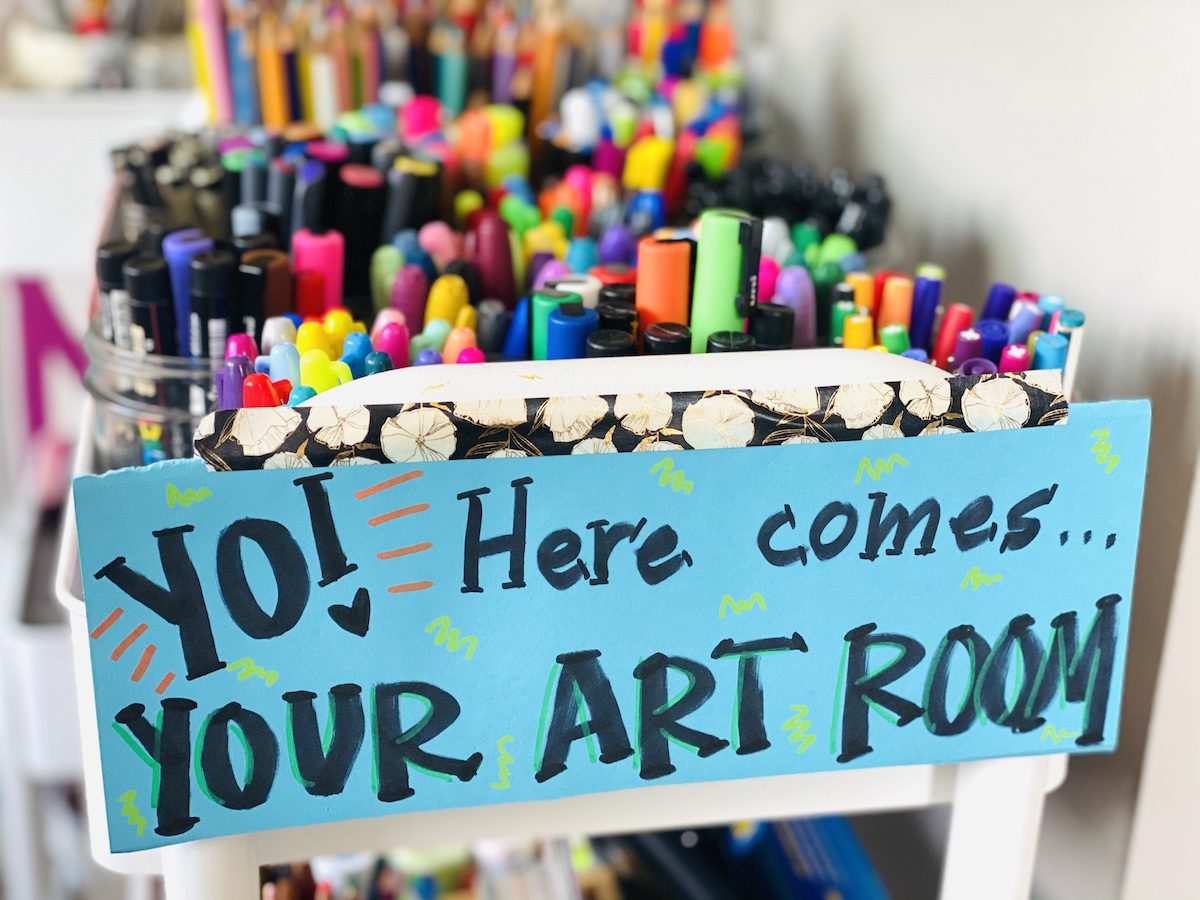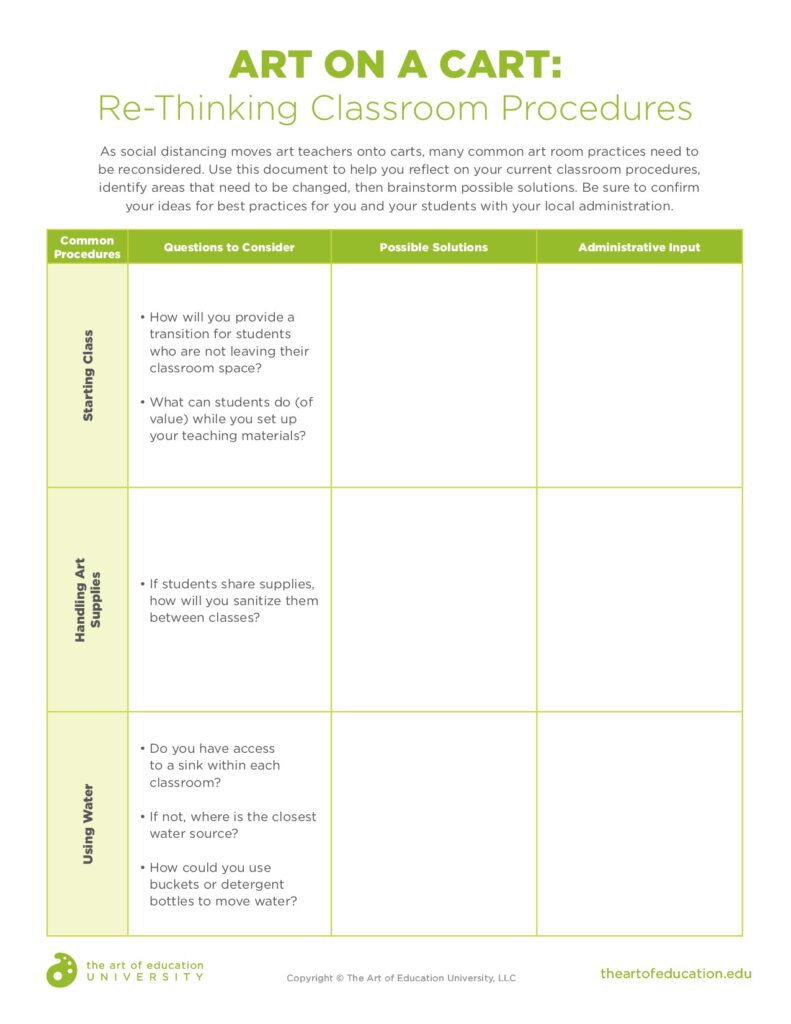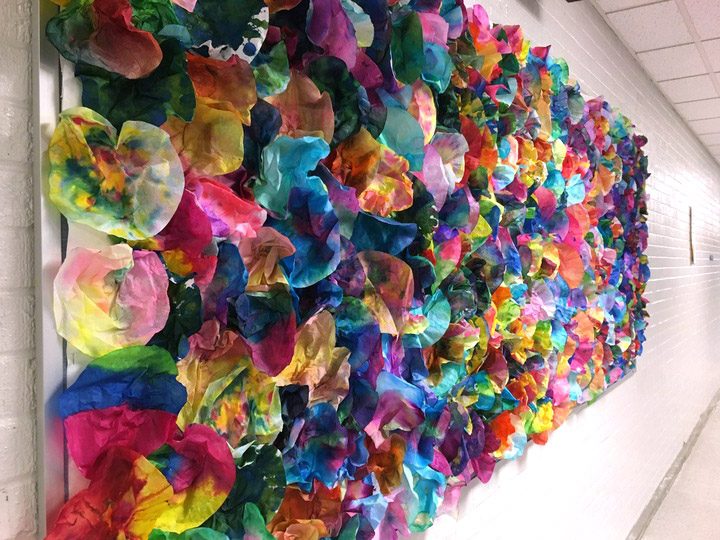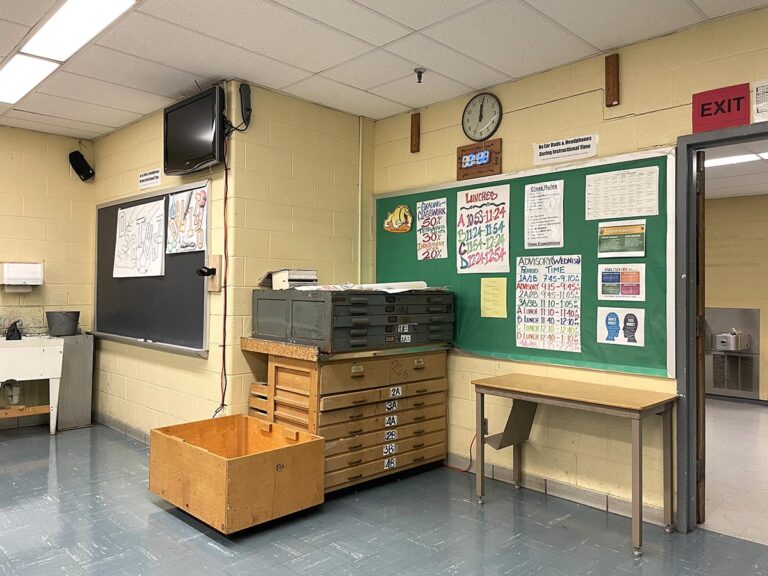Return to Learn with The Art of Education University
With so much up in the air regarding returning to school safely, many art teachers have found themselves potentially teaching “Art on a Cart.”
Many amazing educators have taught art from a cart for years and have lots of tricks and tips for a successful art experience. On the flip side, transitioning to art on a cart during a pandemic will look different from any other school year. But don’t worry, it’s not impossible. It is vital to stay positive.
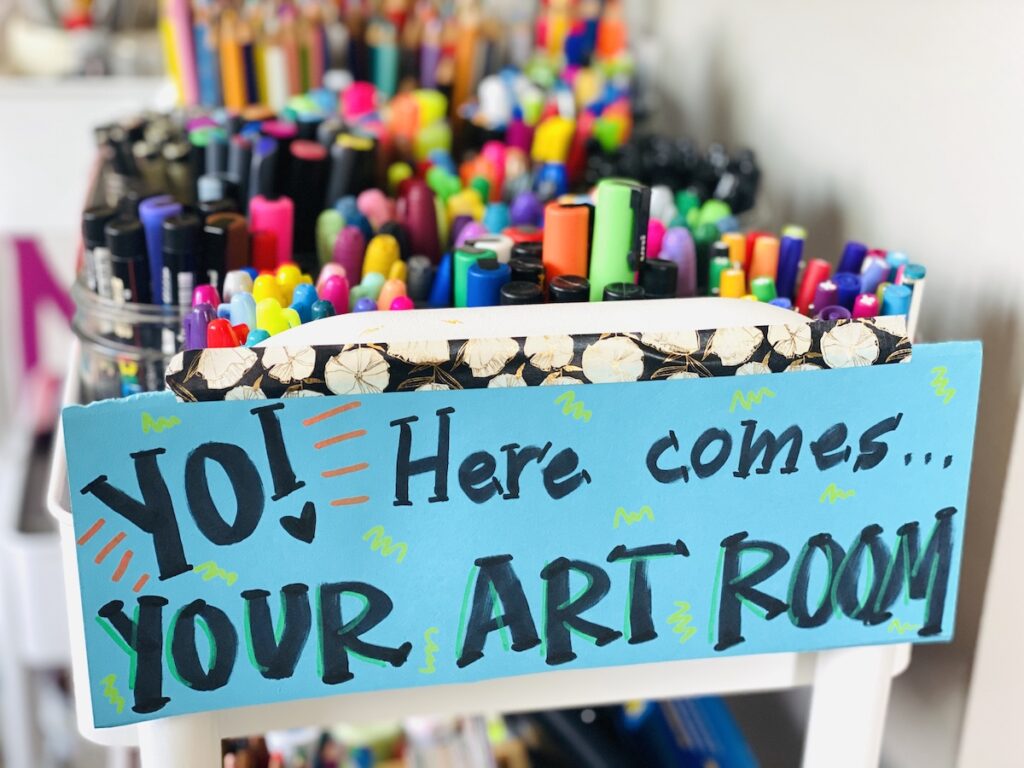
Here are 5 tips for working smarter, not harder when teaching “Art on a Cart.”
1. Organization is your best friend.
Outside of the comfort of your own art room, you are going to need to change up your typical art teacher song and dance. You won’t be able to grab extra supplies, whip up an early finisher project, or adjust a lesson in the same way that you would in your own art room.
Therefore, it’s important to always have a plan B. Consider bringing extra simple drawing materials to switch up your lesson or prepare an alternative to specific technology use in case it’s unavailable.
2. Make your art cart just right for you.
With so many amazing art cart setups out there, it can be tricky to know what will work best for you. Consider these questions to help you guide your search for the perfect art cart.
- Do I already have a cart I can use from my room?
Don’t feel you need to purchase a cart if you can repurpose something you already have. - What size cart will work best for moving around my school?
Bigger isn’t always better. If you’re going to move your cart around a classroom, it should fit in between desks and classroom furniture easily. - What bells and whistles are necessary?
Using that inventive art teacher brain of yours, find the gadgets that will make your job easier. For example, consider a magnetic strip attached to the cart for displaying information, stackable bins for easy supply storage, or a slide-out drawer for your technology device. - How many classes will I load up at once?
Maybe you will plan to set up multiple art carts, one for morning classes, and one for the afternoon. You might also consider alternating carts for different hybrid groups.
- How can I effectively sanitize the materials on the cart?
Consider having empty “dirty” bins for placing materials that need to be sanitized after student use. Utilize student’s own individual supplies, like crayons and markers, to cut down on supply cleaning. - Where will I store student projects?
If you plan to bring student projects with you to classrooms, you’ll need some sort of storage system in place. Better yet, discuss the ability to leave an art bin in each classroom, so student projects are always there when you arrive. - How can I add ownership to my cart?
As art teachers, we want our carts to be as awesome as our art room. Take the time to decorate your cart or have students help make it feel like a rolling art room. You can even have a contest for students to design the best license plate for your cart. - Does your cart include classroom management strategies?
Continue to use your art room volume chart and your art room mantra. Display these routine posters proudly on your art cart.
To work out these questions and more use the ART ON A CART: Re-Thinking Classroom Procedures Worksheet. Download your own copy here.
3. Build rapport with your new temporary roommate, the classroom teacher.
Being in someone else’s space can be uncomfortable, and it’s important to address any concerns that might arise. Use this free download to strike up a social contract with your classroom teachers for best teaching and communication practices.
Simply sign the letter and share your personal plans moving forward. Then, share the letter with your classroom teachers for continued open communication.
4. Keep your lessons simple and meaningful.
There’s no question; your students miss you. Your students are craving a meaningful connection with you more than they are missing creating a complicated sculpture. Keep your lessons simple. Focus on building social-emotional connections. Start with simple and fun drawing lessons to get into the groove of being back at school. This year is hard for everyone, and there’s no need to make it harder with complex lessons.
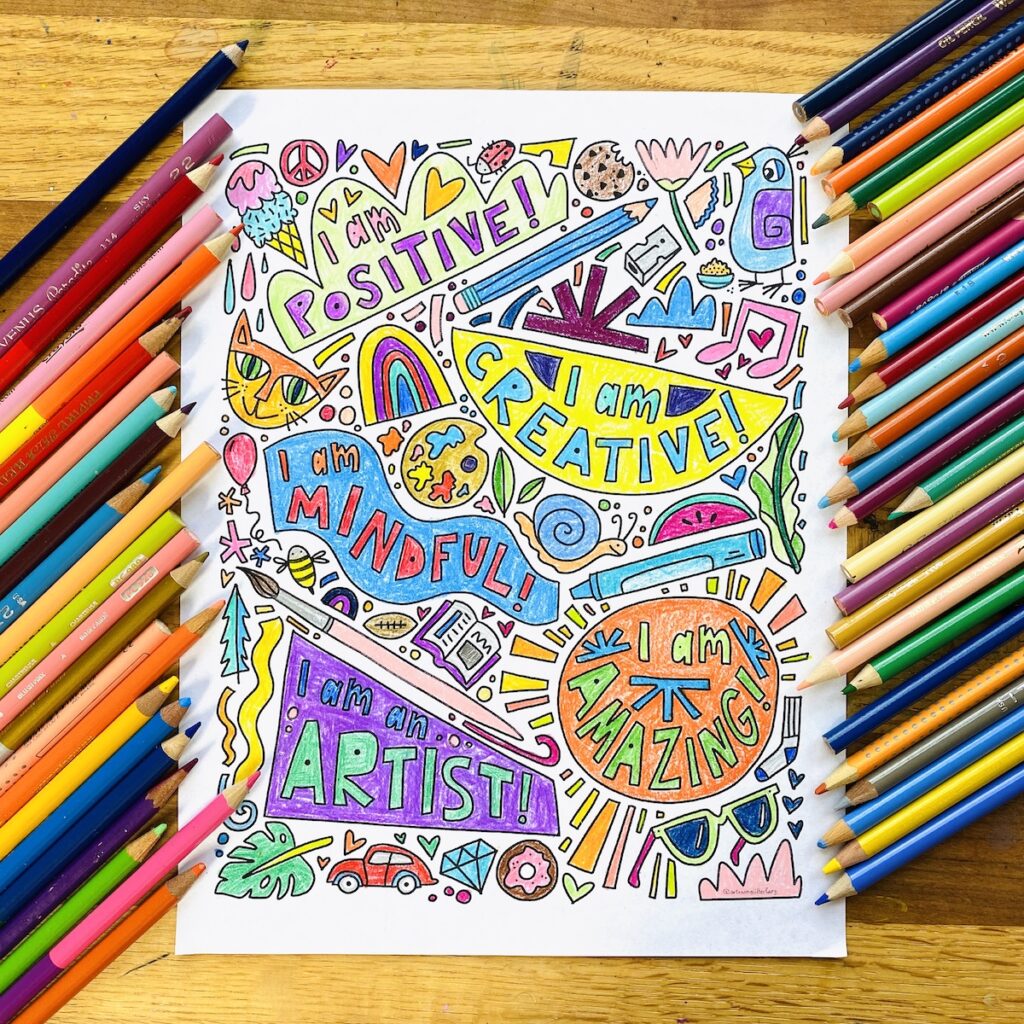
5. Continue with your tried-and-true classroom management.
Even though you are not in your own art room, you are still an excellent educator who knows how to manage students. Try some simple tricks like turning off the lights or playing a fun song like, “Crayola Doesn’t Make a Color for Your Eyes,” when you enter the room to signal that it’s time for art. Incorporate five mindful minutes to continue routines from your art room practice.
Return to Learn with The Art of Education University
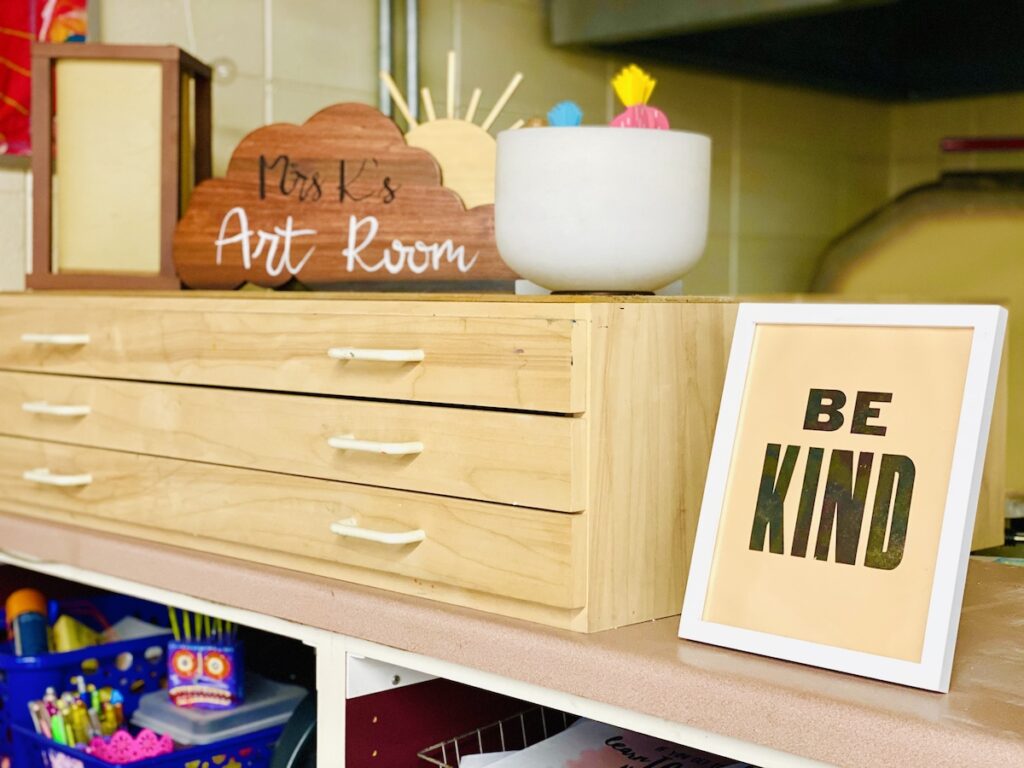
5. Stay positive and lean on your art teacher community for support.
The art teacher community is filled with positive people sharing their helpful hints for successful teaching. Learning a simple trick like dispensing water from an old laundry detergent container may just save your sanity. Remember, you set the tone for how you approach teaching. If you lead with a positive attitude, your students will follow.
So, mask up, put on your art teacher tool belt, clip on your bottle of hand sanitizer, and give your students the best art experience possible.
What cart features do you find absolutely necessary?
What kinds of lessons are you excited to try with art on a cart?
How do you plan to establish a strong adult culture with your coworkers?
Magazine articles and podcasts are opinions of professional education contributors and do not necessarily represent the position of the Art of Education University (AOEU) or its academic offerings. Contributors use terms in the way they are most often talked about in the scope of their educational experiences.
